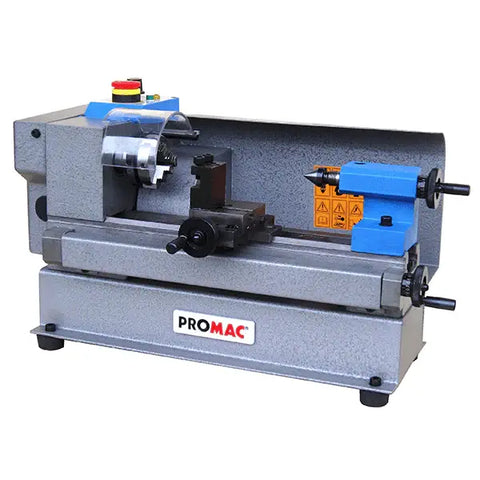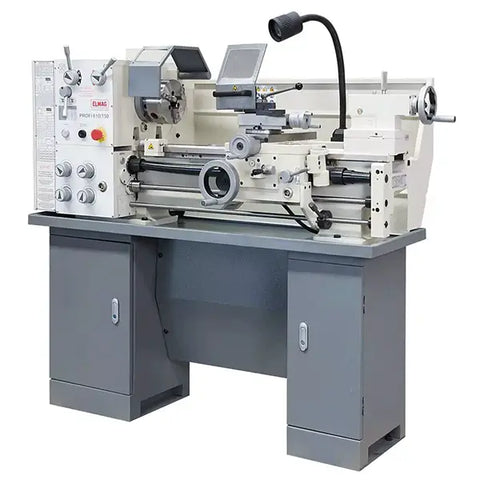
Understanding How Lathes are Specified - A Guide
Welcome to our comprehensive guide on how lathes are specified. When it comes to selecting the perfect lathe machine for your metalworking needs, understanding the various specifications and characteristics is crucial. In this guide, we will explore the key factors to consider and provide valuable insights to help you make an informed decision.
Lathe machine specifications play a crucial role in determining its capabilities and performance. From the swing over bed to the distance between centers, each specification brings unique characteristics to the table. By understanding these specifications, you can choose a lathe that aligns perfectly with your machining requirements.
Additionally, the different features of lathes can greatly impact their functionality and versatility. Factors such as spindle speed range, horsepower, and thread-cutting capabilities are essential considerations. We will walk you through all the necessary details to ensure you are equipped with the knowledge needed for successful lathe selection.
Furthermore, it is important to be aware of the various types of lathes available in the market. Engine lathes, toolroom lathes, turret lathes, and CNC lathes each have unique characteristics and applications. By exploring these types, you can choose a lathe machine that best suits your specific metalworking needs.

Key Takeaways:
- Understanding how lathes are specified is essential for selecting the right lathe machine.
- Consider the swing over bed, distance between centers, spindle speed range, and horsepower when evaluating lathe specifications.
- Thread-cutting capabilities and other features greatly impact a lathe's functionality.
- Knowing the different types of lathes, such as engine lathes, toolroom lathes, turret lathes, and CNC lathes, helps in making an informed decision.
- Choosing a lathe that meets your metalworking needs ensures optimal results and efficiency.
Lathe Specifications and Features
When it comes to selecting a lathe, understanding the specifications and features is crucial in making an informed decision. Let's explore the key criteria to consider when evaluating lathe models.
1. Swing over Bed
The swing over bed refers to the maximum diameter of the workpiece that can be accommodated by the lathe. It determines the size of material that can be turned and is an important consideration when choosing a lathe.
2. Distance between Centers
The distance between centers indicates the maximum length of the workpiece that can be turned on the lathe. It is important to ensure that the lathe can accommodate the length of the material needed for your projects.
3. Spindle Speed Range
The spindle speed range determines the range of revolutions per minute (RPM) that the lathe can operate at. This specification is crucial for different types of cutting and materials. Consider the range of spindle speeds required for your specific applications.
4. Horsepower
The horsepower of a lathe's motor is an important factor to consider, as it affects the power and efficiency of the machine. Higher horsepower allows for more demanding cutting operations and faster material removal.
5. Thread-Cutting Capabilities
If thread-cutting is a requirement for your projects, consider the lathe's thread-cutting capabilities. Look for lathe models with thread-cutting options, such as metric or imperial, to suit your specific needs.
6. Additional Features
Aside from the essential specifications mentioned above, consider any additional features that may enhance your workflow. This could include digital readouts, quick-change toolposts, coolant systems, and more, depending on your specific requirements.
By evaluating these lathe specifications and features, you can select a model that meets your metalworking needs effectively.

Types of Lathes
When it comes to metalworking, there are several types of lathes available in the market, each with its own unique characteristics and applications. Understanding these different types can help you choose the most suitable lathe for your specific metalworking requirements. Let's take a closer look at each type:
Engine Lathes
Engine lathes are one of the most common types of lathes used in metalworking. They are versatile machines suitable for a wide range of turning operations. Engine lathes are known for their durability, precision, and ability to handle medium to heavy-duty work. Whether you need to turn cylindrical parts, create threads, or perform taper turning, an engine lathe is a reliable choice.
Toolroom Lathes
Toolroom lathes, also known as toolmakers' lathes, are designed for high-precision work and intricate machining tasks. These lathes are commonly found in toolrooms, prototype shops, and small-scale production environments. Toolroom lathes offer exceptional accuracy, allowing you to create intricate details and achieve tight tolerances. They are perfect for producing small batches of highly precise components.
Turret Lathes
Turret lathes are specialized machines equipped with a turret tooling system. This allows for rapid tool changes and enables simultaneous machining operations. These lathes are ideal for high-volume production environments where speed and efficiency are crucial. Turret lathes are commonly used in industries such as automotive, aerospace, and manufacturing, where repetitive tasks and rapid production are necessary.
CNC Lathes
CNC lathes, or Computer Numerical Control lathes, are advanced machines that offer unparalleled precision, automation, and versatility. With the ability to be programmed and controlled using computer software, CNC lathes can produce complex parts with high accuracy and consistency. These lathes are widely used in industries ranging from aerospace and medical to electronics and automotive, where superior precision and efficiency are paramount.
| Type of Lathe | Characteristics | Applications |
|---|---|---|
| Engine Lathes | Versatile, durable, precise | Medium to heavy-duty turning operations |
| Toolroom Lathes | High precision, intricate machining | Toolrooms, prototype shops, small-scale production |
| Turret Lathes | Rapid tool changes, simultaneous machining | High-volume production environments |
| CNC Lathes | Precision, automation, versatility | Aerospace, medical, electronics, automotive |

Conclusion
In conclusion, this comprehensive guide has provided you with a detailed understanding of how lathes are specified, ensuring that you have the knowledge needed to make an informed decision when selecting the right lathe for your metalworking needs. By considering the important specifications and features, such as the swing over bed, distance between centers, spindle speed range, and horsepower, you can ensure that the lathe you choose is suitable for your specific requirements.
Additionally, we explored the different types of lathes available, including engine lathes, toolroom lathes, turret lathes, and CNC lathes. Understanding the characteristics and applications of each type will enable you to select the most suitable lathe that will enhance your metalworking capabilities.
By utilizing the information in this guide, you are equipped with the necessary knowledge to navigate the world of lathe machine specifications and make a well-informed decision. Whether you are a professional metalworker or a hobbyist, selecting the right lathe is crucial for achieving precise results and enhancing your productivity. Remember to consider the key features and specifications discussed throughout this guide to ensure that your chosen lathe meets your specific requirements efficiently and effectively. Happy metalworking!

